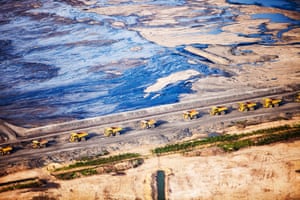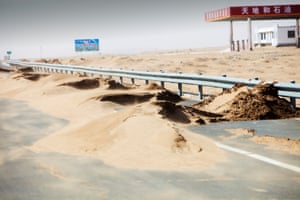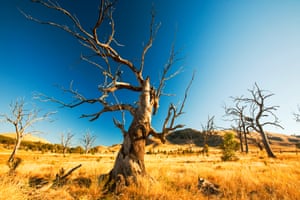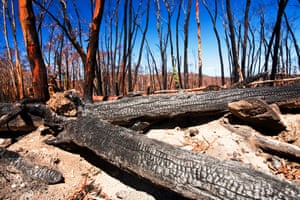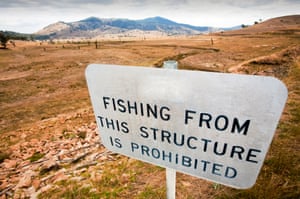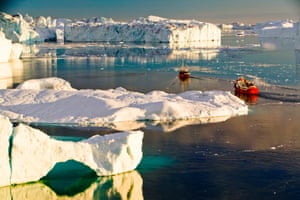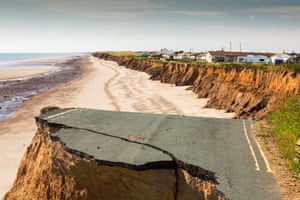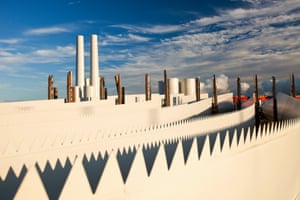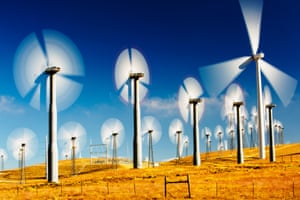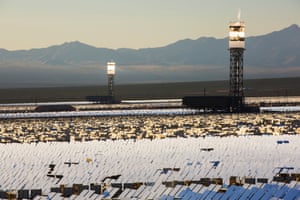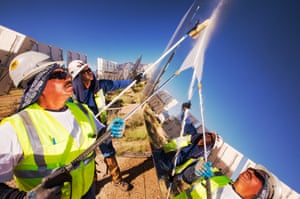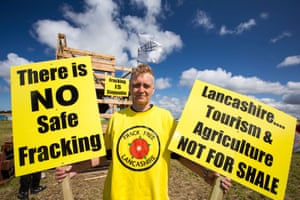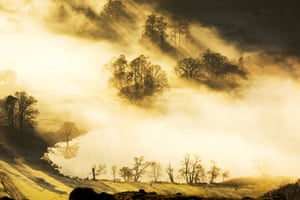 |
| Fire significantly added to our ability to change the world. Fire image from www.shutterstock.com |
Over the past year, carbon dioxide (CO₂) levels in the atmosphere have risen faster than any period in the past 55 million years. That's the finding of my study published in Global Change Biology.
From April 2015 to April 2016, CO₂ levels rose by 4.6 parts per million (ppm), reaching a level of 407.42ppm at Mauna Loa observatory, Hawaii. This rate has increased in the past 200 years and forms a unique spike, reflecting accelerating global warming reinforced by the recent El Niño.
CO₂ levels above 400ppm have not been observed in the Earth's climate record since the Pliocene, 5.3-2.6 million years ago, when sea level was about 25 metres higher than at present.
While climate change has gained scientific attention in the past 50 years, and political action in the last 25, humans have been altering the atmosphere much longer than that.
About 7,000 years ago, the development of agriculture, burning and land clearing is believed to have led to a small rise in CO₂ in the atmosphere (around 20-25ppm). Methane also rose by a small amount from 5,000 years ago.
These small rises didn't lead to increasing temperatures, because the overall temperature trend until the 18th century was cooling.
Humans have since increased CO₂ from 280ppm before the Industrial Revolution to over 400ppm. Together these global changes, driven by our use of energy, have led scientists to define a new geological age, the Anthropocene.
A new age
Although not yet officially recognised, the Anthropocene is widely considered to have begun in the 18th century with the release of greenhouse gases (CO₂, methane and nitrogen oxides), land clearing, chemical pollution and other human activities. These changes have accelerated since the 1950s.
Some think the Anthropocene began much earlier, linked to the first rise in greenhouse gases around 7,000 years ago. In evolutionary terms, it can be suggested the blueprint for anthropogenic global warming originated earlier still with the harnessing of fire.
The only natural parallel with the speed of climate changes over the last few decades is during mass extinctions, when the pace of change exceeds the ability of species to adapt. Mass extinctions in the past have been triggered by large-scale volcanic events or asteroid impacts.
This time it's us causing the changes. The unique ability of an organism to trigger a mass extinction has a possible precedent in the history of Earth.
As US palaeontologist Peter Ward explains in Under Green Sky (2008), the Permian-Triassic mass extinction (about 251 million years ago) was, at least in part, caused by toxic gas released by purple-green algae from the oceans.
Fire and ice
What has made humans so effective at causing environmental change? There are two essential factors.
First, with the exception of humans, no species has ever been able to harness combustion in order to magnify its energy output. Humans mastered fire at least 1 million years ago, and possibly earlier.
Fire has allowed us to cook. Consequently, we were able to increase our protein consumption, hunt, protect ourselves from cold and wild animals, move into inhospitable climate, clear the land, smelt metals and construct machines.
Fire vastly increased the amount of energy available for people to use. Human respiration dissipates 2–10 calories per minute, a camp fire covering one square metre releases approximately three to four orders of magnitude more, and the output of a 1,000 megawatt-hour power plant expends yet higher orders of magnitude than the energy produced by human respiration.
Second, humans have been blessed by a relatively stable climate over the past 7,000 years, although mean global variations of less than 1℃ were sufficient to cause serious disruption to agriculture and a decline to collapse of civilisations.
Ice core evidence for the concentration of greenhouse gases and atmospheric temperatures during the last 740,000 years suggests highly unstable and often extreme climates during the ice ages (glacial) and during abrupt cooling phases (called "stadials") during warmer (interglacial) periods, preventing the development of farming.
A stable climate developed around 7,000 years ago. This allowed large-scale Neolithic production of extra food and thereby the emergence of villages, towns and later cities. This opened the way for Homo sapiens to expand its population and trigger energy output by huge amounts.
Thus, despite their high intelligence, humans were largely restricted to hunting and gathering until they mastered fire and then until the climate stabilised enough to allow farming.
The future
Since the onset of the industrial age, humans have released more than 600 billion tonnes of carbon, pushing mean global temperatures up by around 1°C globally, or 1.5°C on the continents.
Allowing for the cooling effects of sulphur aerosols (which reflect sunlight), the rise in temperatures is closer to 2°C, a mean global temperature similar to the Pliocene (2.6 - 5.3 million years ago). More recently the rise of atmospheric CO₂ accelerated, to rates higher than 3ppm per year during 2012-2016.
While we know a lot about what may happen in a warming world, widely agreed projections of future temperatures do not include the possibility of abrupt climate tipping point events.
Following the peak of previous warm periods, the Atlantic Mid-Ocean Circulation (AMOC) has repeatedly collapsed due to the melting Greenland ice sheet and flow of cold meltwater into the ocean, triggering much colder temperatures, followed by further warming. Examples are the cold Younger Dryas (12,900-11,700 years ago) and the collapse of the North American ice sheet about 8,200 years ago.
A future AMOC collapse may be signified by a growing cold region southeast of Greenland in the North Atlantic. An AMOC collapse will trigger a sharp decline in temperatures in the North Atlantic region for a limited but unspecified period. With high atmospheric CO₂ levels, such a collapse would be followed by renewed warming.
Recent history inexorably links human civilisation to the Earth's climate. Given its mastery of fire and nuclear fission, humanity would need to be both wise and in control if it is to avert the energy released from these sources from threatening nature and its own future.
This article is based on Climate, Fire and Human Evolution (2016) by Andrew Glikson.
Links

